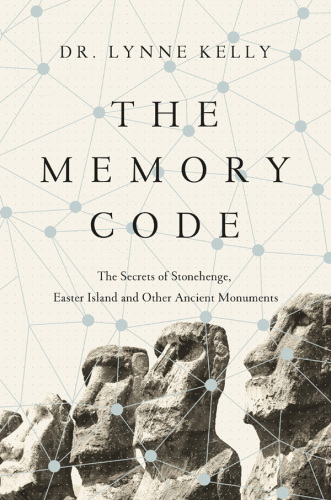
The Memory Code
کتاب های مرتبط
- اطلاعات
- نقد و بررسی
- دیدگاه کاربران
نقد و بررسی

December 12, 2016
In this intriguing, if not entirely persuasive, book, Australian science writer Kelly (Knowledge and Power in Prehistoric Societies) links many prehistoric sites of monumental architecture to the need of preliterate cultures to memorize vast numbers of important facts. She begins by examining the techniques currently or recently in use that allow memory keepers among the Australian Aboriginal people, Navajo, Dogon, and others to retain information on hundreds of animal and plant species as well as culturally significant topics such as genealogies and customs. This is accomplished through the technique that the Greeks referred to as “the method of loci,” encoding knowledge to physical or mental spaces. Kelly describes her own use of these techniques, but not in enough detail for her work to truly be useful as a primer. She devotes the bulk of the book’s second half to linking such specific monumental sites as Stonehenge to her idea that a wide range of these sites were used by their creators as memory-encoding spaces. Kelly’s arguments are plausible—and persuasive where links exist between current cultures and predecessors, such as the Pueblo and the Ancestral Puebloans of Chaco Canyon—but her certitude is troublesome, and the conclusion that “the method of loci is the universal driver” is not supported by this work.

January 1, 2017
A thought-provoking theory on "memory palaces" and their significance to ancient ancestral civilizations.Science writer Kelly's (Knowledge and Power in Prehistoric Societies, 2015) thorough, fascinating examination of indigenous cultures of Australia and New Zealand led her to a new anthropological philosophy on how Stonehenge and other prehistoric monuments were built and their shared purpose. Throughout her doctorate studies, the author invested increasing amounts of time studying the knowledge patterns of primitive, nonliterate societies and the ways in which orality made shared knowledge memorable and applicable. Though widely considered to be intellectually inferior, indigenous cultures like the aborigines of Australia, among many others, developed complex exchanges of encyclopedic knowledge through methods of memory and repetition, perfected over centuries of practice and adaptation. Kelly believes these place-associative memorization systems, whether patterned through songs, dance, mythological stories, stars, landscape, or handheld totems, were instrumental in generating the knowledge necessary to construct what have become some of the world's most mystifying architectural wonders. Deepening her research, the author applied these mnemonic techniques to her own life, experimenting with local landscapes and honing personal memory skills with representational imagery; she used activities as simple as a walk with her dog to illustrate and apply this ancient technique. Most interestingly, Kelly then applies this theory to the ancient monuments that have confounded and fascinated mankind for centuries. These include Stonehenge, which the author brilliantly and painstakingly analyzes in time period stages, the extraordinary monolithic moai of Easter Island, the expansive geoglyphs in the southern Peruvian desert, and the stone rows and circles of Neolithic France and Britain. Kelly believes all of these were constructed as memory aids to ancient elders, and she generously addresses each location with cleareyed, occasionally dense, yet absorbing prose while drawing important attention to a radical new idea about the real purpose of these historic marvels. A plausible and provocative hypothesis on how methods of memorization may have laid the groundwork for many mysterious extant monuments.
COPYRIGHT(2017) Kirkus Reviews, ALL RIGHTS RESERVED.

February 15, 2017
Preliterate cultures across the globe retained important general knowledge, cultural history, myths, and stories in order to survive. Science writer Kelly (Knowledge and Power in Prehistoric Societies), inspired by her study of the beliefs of traditional Aboriginal Australian song lines and the concept of orality, theorizes that a technique known as "the method of loci" allowed tribal elders throughout the world to memorize this vast encyclopedic knowledge. The key to this approach is relying on specific physical spaces and objects as memory spaces. The author theorizes that ancient monuments such as Stonehenge, passage cairns in Ireland, elaborate stone houses of New Mexico, and statues of Easter Island functioned as "memory places." This fascinating narrative offers fresh interpretations of these physical spaces and their archaeological discoveries. It should be noted that one chapter delves into Kelly's use of modern-day memory spaces to aid her own memorization; however, this book should not be considered a primer. VERDICT Readers interested in preliterate cultures, Neolithic archaeological sites, and memory techniques will find this research thought provoking.--Angela Forret, Clive P.L., IA
Copyright 2017 Library Journal, LLC Used with permission.

























دیدگاه کاربران